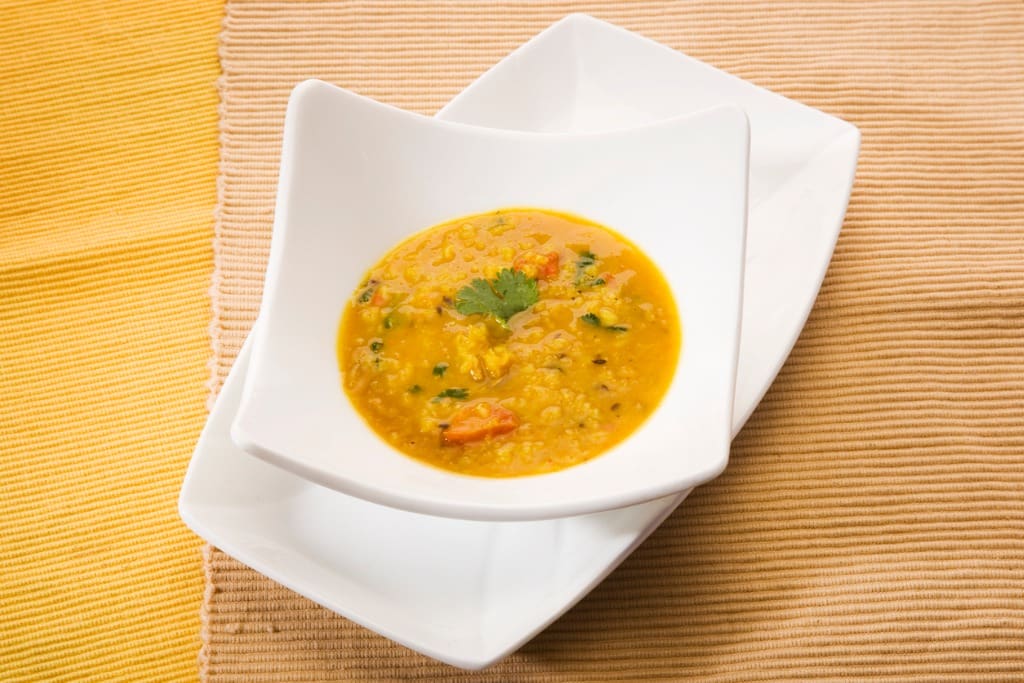
Beans are not considered paleo and are often shunned in the paleo community because of their lectins. However, split mung beans are an exception. They have been used in Ayurvedic medicine for centuries because of their qualities that make them easy to digest and their lack of lectins. They are also rich in protein (19 grams per serving), high in fiber (6 grams per serving), and very versatile. When they are used to make kitcharee, Ayurveda’s favorite detoxification meal, they are cooked with digestive healing spices. The herbs and spices used in kitcharee can be modified to suit any Ayurvedic dosha type or any body’s needs. There are no two kitcharee dishes that are the same. Have fun modifying this healthy, easy to digest and oh so healing dish.
What you’ll need:
- 2 tablespoons (30 ml) organic ghee (or avocado oil if you wish)
- 1 onion, minced (you can eliminate this if you are healing from SIBO)
- 2 tablespoons (30 ml) fresh ginger, minced (don’t skimp on this)
- 1 teaspoon (5 ml) cumin powder
- 1 head of cauliflower, chopped
- 1½ cups (270 g) yellow split mung beans, uncooked
- 8 to 10 cups chicken broth or water (4¼ liters)
- 1 teaspoon (5 ml) Himalayan salt
- 1½ teaspoons (7 ml) turmeric
- 1 tablespoon (15 ml) coriander power or seeds
- 2 teaspoons fennel seeds
- 1 teaspoon garam masala
- ½ teaspoon black pepper ground
- 8 green cardamom pods
- Organic mixed greens
Instructions:
Heat ghee in a large soup pot over medium heat. Add the onions and sauté for about 5 minutes, until translucent. Add ginger and sauté for a few more minutes, until it starts to brown.
Add the cumin and stir, ensuring the ginger is coated.
Add the cauliflower and cook until browned. This should take about 5 to 8 minutes. You can turn the heat up to get the browning process going. Just be sure to watch it and stir every few minutes.
Wash the mung beans thoroughly. Add the mung beans to the pot. Stir and sauté for about 3 to 5 minutes, just enough to bring out the nuttiness.
Add the rest of the spices and about 8 cups of chicken broth (or water). Bring the mixture to a boil (lid on). As the mixture starts to reduce and the mung beans absorb the liquid, test the doneness of the beans by tasting them. If they are still hard after most of the liquid has been absorbed, add another cup of water and continue to cook at medium-high heat without a cover. Taste the beans again, and if necessary, add another cup of water and keep cooking. Continue in this fashion until the beans are soft and most of the liquid is absorbed.
When almost all of the liquid is absorbed, you can add the organic mixed greens and stir. Keep tossing/stirring until the greens are wilted.
Season with Himalayan salt to taste. You can serve this over cooked wild, brown, or basmati rice if desired (not paleo) or cooked quinoa. You can also add any number of vegetables to kitcharee. Play with the amount of liquid you use to see if you like it soupy or thicker.





